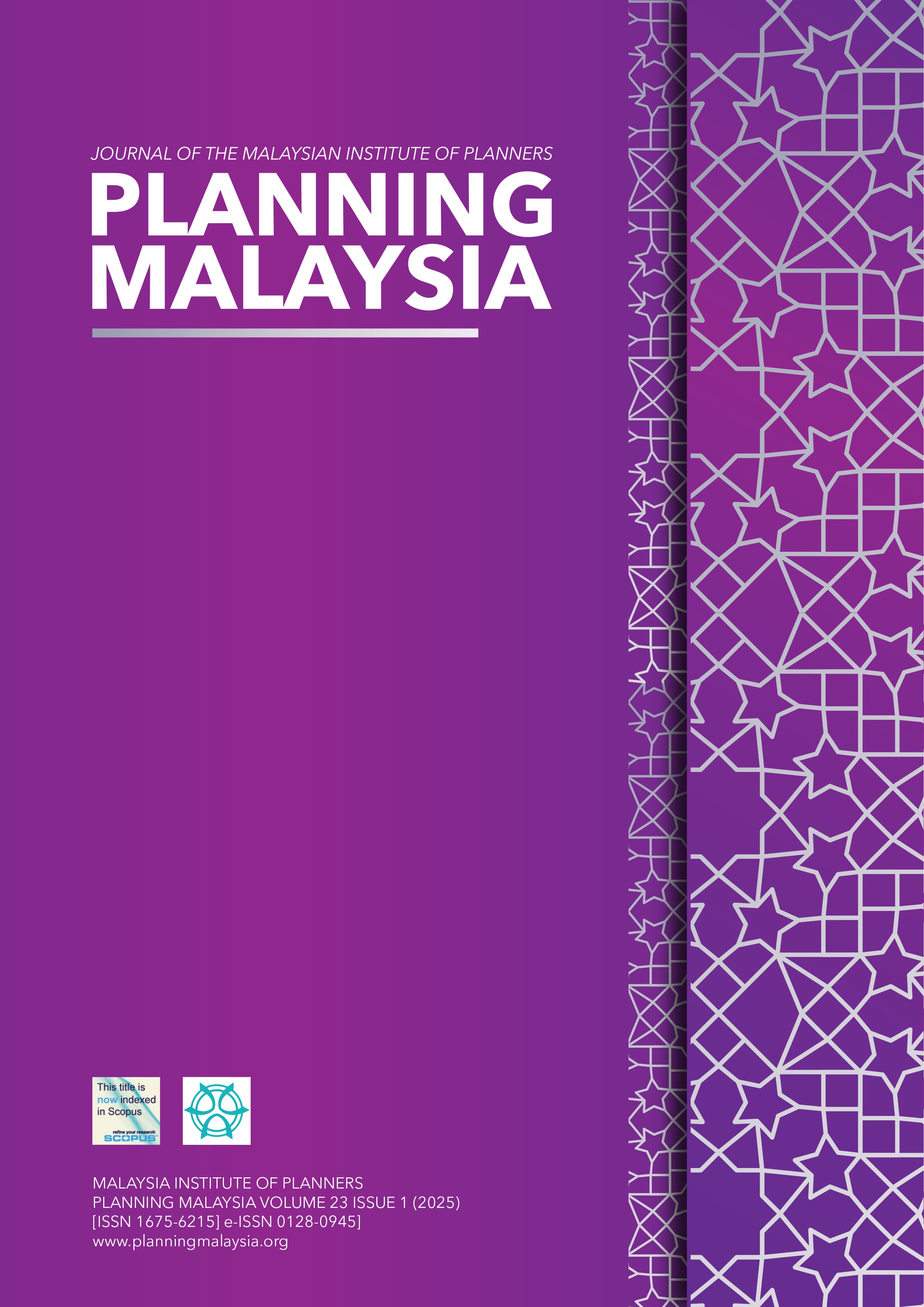AGROPOLITAN PLANNING AS A STRATEGY FOR PROMOTING SUSTAINABLE LIVING AMONG RURAL POOR COMMUNITIES: EMPIRICAL EVIDENCE
DOI:
https://doi.org/10.21837/pm.v23i35.1660Keywords:
Agropolitan, rural, sustainable livelihood, povertyAbstract
Although Malaysia's poverty rate has decreased, there are still people who suffer from extreme poverty, especially in rural areas. The agropolitan project aims to eradicate extreme poverty and accelerate development in rural areas. The achievements of agropolitan projects are evaluated through the extent to which they help participants to get out of extreme poverty and are measured using Poverty Line Income (PLI). A study using the Sustainable Livelihood Framework (SLF) was conducted at the Gahai Agropolitan Project, Lipis, Pahang, and involved 45 participants. Research data was obtained through the distribution of questionnaires and analyzed using Statistical Package for the Social Sciences (SPSS) version 22 software and Microsoft Excel. Studies indicate that the Gahai Agropolitan Project can eradicate poverty and contribute to sustainable livelihoods. From the aspect of sustainable living, the study results show that the participants of the Gahai Agropolitan Project experience high vulnerability. Moreover, asset ownership analysis reveals that the Gahai Agropolitan Project participants have good asset ownership.
Downloads
References
Ahmad, S., & Saleh, H. (2019). Agropolitan Area Development Model as an Effort to Improve Local Economic Growth Enrekang District. International Journal of Advanced Engineering Research and Science, 6(10), 66-73. DOI: https://doi.org/10.22161/ijaers.610.11
Amir, S., Mohamed Osman, M., Bachok, S., & Ibrahim, M. (2014). Understanding Of Tourists Preferences Pattern: A Study in Melaka, Malaysia. Planning Malaysia, 12(3). DOI: https://doi.org/10.21837/pmjournal.v12.i3.133
Amriah, B., Habibah, A., Hamzah, J., & Ratnawati, Y. S. (2011). The agropolitan way of re-empowering the rural poor. World Applied Sciences Journal 13(13), 1-6.
DFID. (1999). Sustainable livelihoods guidance sheets. London: Department for International Development.
Hahn, M. B., Riederer, A. M., & Foster, S. O. (2009). The Livelihood Vulnerability Index: A pragmatic approach to assessing risks from climate variability and change. A case study in Mozambique. Global Environmental Change 19(1): 74-88. DOI: https://doi.org/10.1016/j.gloenvcha.2008.11.002
Ismail, M. K., Siwar, C., & Ghazali, R. (2018). Gahai agropolitan project in eradicating poverty: Multidimensional poverty index. Planning Malaysia, 16. DOI: https://doi.org/10.21837/pmjournal.v16.i7.503
Ismail, M. K., Siwar, C., Ghazali, R., Ab Rani, N. Z. A., & Talib, B. A. (2019). The analysis of vulnerability faced by gahai agropolitan participants. Planning Malaysia, 17. DOI: https://doi.org/10.21837/pm.v17i10.645
Krejcie, R. V., & Morgan, D. W. (1970). Determining sample size for research activities. Educational and psychological measurement 30(3): 607-610.. DOI: https://doi.org/10.1177/001316447003000308
Ravallion, M. (1995). Growth and poverty: Evidence for developing countries.
Sullivan, C. (2002). Calculating a water poverty index. World development, 30(7), 1195-1210. DOI: https://doi.org/10.1016/S0305-750X(02)00035-9
Yamanei.Y. (1964). Statistics Introduction Analysis. New York: Harper and Row Publishers.
Downloads
Published
How to Cite
Issue
Section
License

This work is licensed under a Creative Commons Attribution-NonCommercial-NoDerivatives 3.0 Unported License.
Copyright & Creative Commons Licence
eISSN: 0128-0945 © Year. The Authors. Published for Malaysia Institute of Planners. This is an open-access article under the CC BY-NC-ND license.
The authors hold the copyright without restrictions and also retain publishing rights without restrictions.


